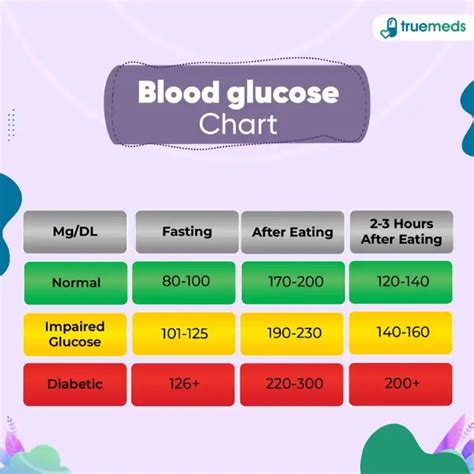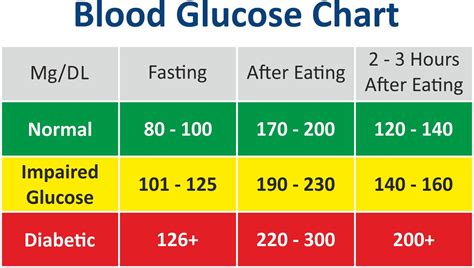Intro
Master normal glucose range with 5 expert tips, including blood sugar monitoring, healthy diet, and exercise routines to maintain stable glucose levels and prevent diabetes complications, ensuring optimal glucose control and overall well-being.
Maintaining a normal glucose range is crucial for overall health and well-being. Glucose, a type of sugar, is the primary source of energy for the body's cells. When glucose levels are within a normal range, the body functions optimally, and the risk of developing chronic diseases like diabetes and cardiovascular disease is reduced. In this article, we will delve into the importance of maintaining a normal glucose range and provide tips on how to achieve it.
The normal glucose range varies throughout the day, depending on factors such as meal times, physical activity, and sleep patterns. Generally, a normal fasting glucose level is between 70 and 99 mg/dL, while a normal postprandial (after meal) glucose level is less than 140 mg/dL. Keeping glucose levels within this range can help prevent complications associated with high or low blood sugar, such as nerve damage, kidney disease, and even death.
Understanding the factors that influence glucose levels is essential for maintaining a normal range. Diet, physical activity, stress, and sleep patterns all play a significant role in glucose regulation. For instance, consuming a diet high in refined carbohydrates and added sugars can cause glucose levels to spike, while regular physical activity can help improve insulin sensitivity and lower glucose levels. By making informed lifestyle choices, individuals can take control of their glucose levels and reduce their risk of developing glucose-related disorders.
Understanding Normal Glucose Range

Understanding what constitutes a normal glucose range is vital for making informed decisions about one's health. A normal glucose range is typically defined as a fasting glucose level between 70 and 99 mg/dL and a postprandial glucose level less than 140 mg/dL. However, these values can vary depending on the individual, their age, and their overall health status. For example, pregnant women or individuals with certain medical conditions may have different glucose targets. It is essential to consult with a healthcare provider to determine the optimal glucose range for a specific individual.
Factors Influencing Glucose Levels
Several factors can influence glucose levels, including diet, physical activity, stress, and sleep patterns. A diet high in refined carbohydrates and added sugars can cause glucose levels to spike, while regular physical activity can help improve insulin sensitivity and lower glucose levels. Stress and sleep deprivation can also disrupt glucose regulation, leading to increased glucose levels. Understanding these factors and making informed lifestyle choices can help individuals maintain a normal glucose range.Tips for Maintaining a Normal Glucose Range

Maintaining a normal glucose range requires a combination of healthy lifestyle habits and informed decision-making. Here are some tips to help individuals achieve and maintain a normal glucose range:
- Eat a balanced diet that is low in refined carbohydrates and added sugars and high in fiber and protein.
- Engage in regular physical activity, such as walking or other aerobic exercises, to improve insulin sensitivity and lower glucose levels.
- Practice stress-reducing techniques, such as meditation or deep breathing, to help manage stress and promote glucose regulation.
- Get adequate sleep each night, aiming for 7-9 hours, to help regulate glucose levels and support overall health.
Monitoring Glucose Levels
Monitoring glucose levels is essential for maintaining a normal glucose range. There are several ways to monitor glucose levels, including: * Fasting glucose tests: This test measures glucose levels after an overnight fast. * Postprandial glucose tests: This test measures glucose levels after a meal. * Continuous glucose monitoring (CGM) systems: This system uses a small sensor to track glucose levels throughout the day. * Self-monitoring of blood glucose (SMBG): This involves using a glucose meter to track glucose levels at home.The Importance of Physical Activity

Regular physical activity is essential for maintaining a normal glucose range. Physical activity helps improve insulin sensitivity, reducing the amount of insulin needed to regulate glucose levels. Additionally, physical activity can help lower glucose levels by increasing the uptake of glucose by the muscles. Aim for at least 150 minutes of moderate-intensity aerobic exercise, or 75 minutes of vigorous-intensity aerobic exercise, or a combination of both, per week.
Benefits of Regular Exercise
Regular exercise provides numerous benefits for glucose regulation, including: * Improved insulin sensitivity: Regular exercise can help improve insulin sensitivity, reducing the amount of insulin needed to regulate glucose levels. * Increased glucose uptake: Exercise can help increase the uptake of glucose by the muscles, reducing glucose levels. * Weight management: Regular exercise can help with weight management, reducing the risk of developing insulin resistance and type 2 diabetes. * Reduced stress: Exercise can help reduce stress levels, promoting glucose regulation and overall health.Dietary Considerations

Diet plays a crucial role in maintaining a normal glucose range. A diet high in refined carbohydrates and added sugars can cause glucose levels to spike, while a diet low in fiber and protein can disrupt glucose regulation. Here are some dietary considerations for maintaining a normal glucose range:
- Choose whole, unprocessed foods: Focus on whole, unprocessed foods, such as fruits, vegetables, whole grains, lean proteins, and healthy fats.
- Limit refined carbohydrates: Limit or avoid refined carbohydrates, such as white bread, sugary snacks, and sweetened beverages.
- Include protein and healthy fats: Include protein and healthy fats, such as nuts, seeds, avocados, and olive oil, to help regulate glucose levels.
Meal Planning Tips
Here are some meal planning tips to help maintain a normal glucose range: * Eat regular meals: Eat regular meals to help regulate glucose levels and prevent spikes. * Choose complex carbohydrates: Choose complex carbohydrates, such as whole grains, fruits, and vegetables, which are rich in fiber and take longer to digest. * Include protein and healthy fats: Include protein and healthy fats, such as nuts, seeds, avocados, and olive oil, to help regulate glucose levels.Stress Management Techniques

Stress can disrupt glucose regulation, leading to increased glucose levels. Here are some stress management techniques to help maintain a normal glucose range:
- Meditation: Practice meditation to help reduce stress and promote glucose regulation.
- Deep breathing: Practice deep breathing exercises to help reduce stress and promote relaxation.
- Yoga: Practice yoga to help reduce stress and promote glucose regulation.
Benefits of Stress Reduction
Reducing stress provides numerous benefits for glucose regulation, including: * Improved insulin sensitivity: Reducing stress can help improve insulin sensitivity, reducing the amount of insulin needed to regulate glucose levels. * Reduced glucose levels: Reducing stress can help reduce glucose levels by promoting glucose regulation. * Improved overall health: Reducing stress can help improve overall health, reducing the risk of developing chronic diseases.Sleep and Glucose Regulation

Sleep plays a crucial role in glucose regulation. During sleep, the body regulates glucose levels, and insulin sensitivity is improved. Here are some tips for improving sleep and maintaining a normal glucose range:
- Establish a bedtime routine: Establish a bedtime routine to help improve sleep quality.
- Avoid caffeine and electronics before bedtime: Avoid caffeine and electronics before bedtime to help improve sleep quality.
- Create a sleep-conducive environment: Create a sleep-conducive environment, such as keeping the room cool, dark, and quiet.
Benefits of Adequate Sleep
Adequate sleep provides numerous benefits for glucose regulation, including: * Improved insulin sensitivity: Adequate sleep can help improve insulin sensitivity, reducing the amount of insulin needed to regulate glucose levels. * Reduced glucose levels: Adequate sleep can help reduce glucose levels by promoting glucose regulation. * Improved overall health: Adequate sleep can help improve overall health, reducing the risk of developing chronic diseases.What is a normal glucose range?
+A normal glucose range is typically defined as a fasting glucose level between 70 and 99 mg/dL and a postprandial glucose level less than 140 mg/dL.
How can I maintain a normal glucose range?
+Maintaining a normal glucose range requires a combination of healthy lifestyle habits, including a balanced diet, regular physical activity, stress management, and adequate sleep.
What are the benefits of maintaining a normal glucose range?
+Maintaining a normal glucose range provides numerous benefits, including improved insulin sensitivity, reduced glucose levels, and improved overall health, reducing the risk of developing chronic diseases.
In conclusion, maintaining a normal glucose range is crucial for overall health and well-being. By understanding the factors that influence glucose levels and making informed lifestyle choices, individuals can take control of their glucose levels and reduce their risk of developing glucose-related disorders. Remember to eat a balanced diet, engage in regular physical activity, practice stress-reducing techniques, and get adequate sleep each night. If you have any questions or concerns about maintaining a normal glucose range, be sure to consult with a healthcare provider. Share this article with friends and family to help spread awareness about the importance of glucose regulation, and don't forget to comment below with any questions or tips you may have!
